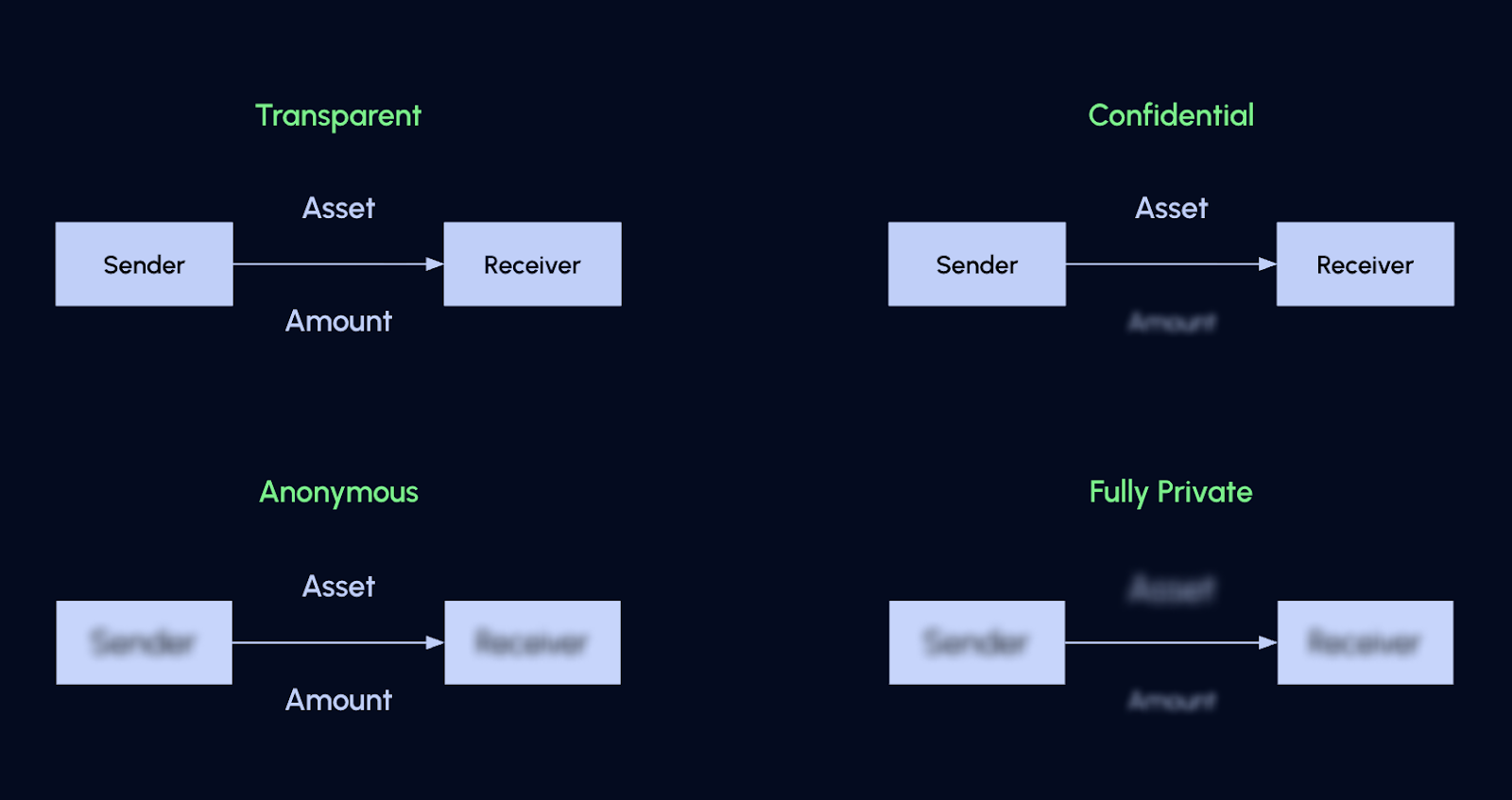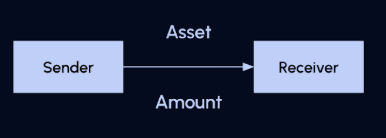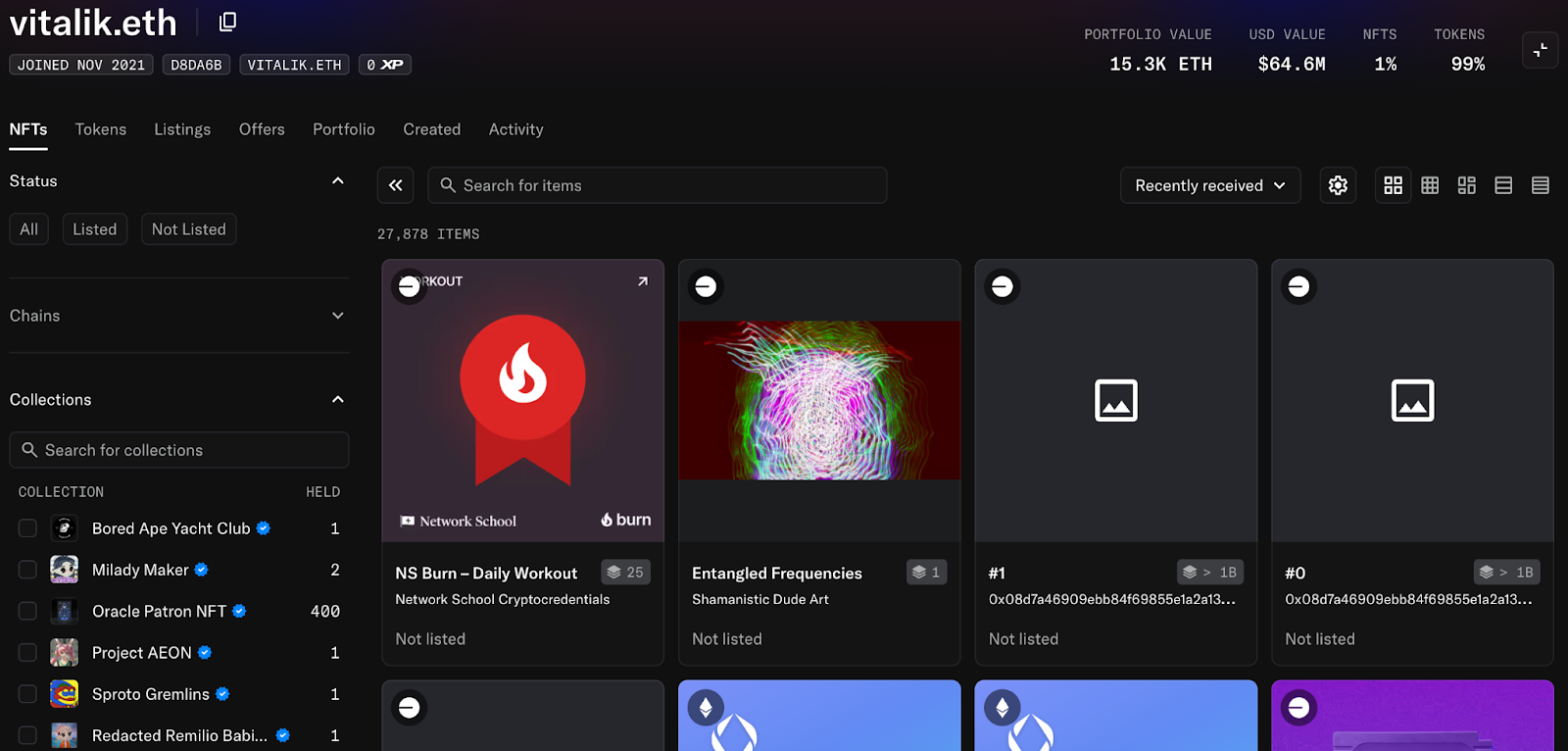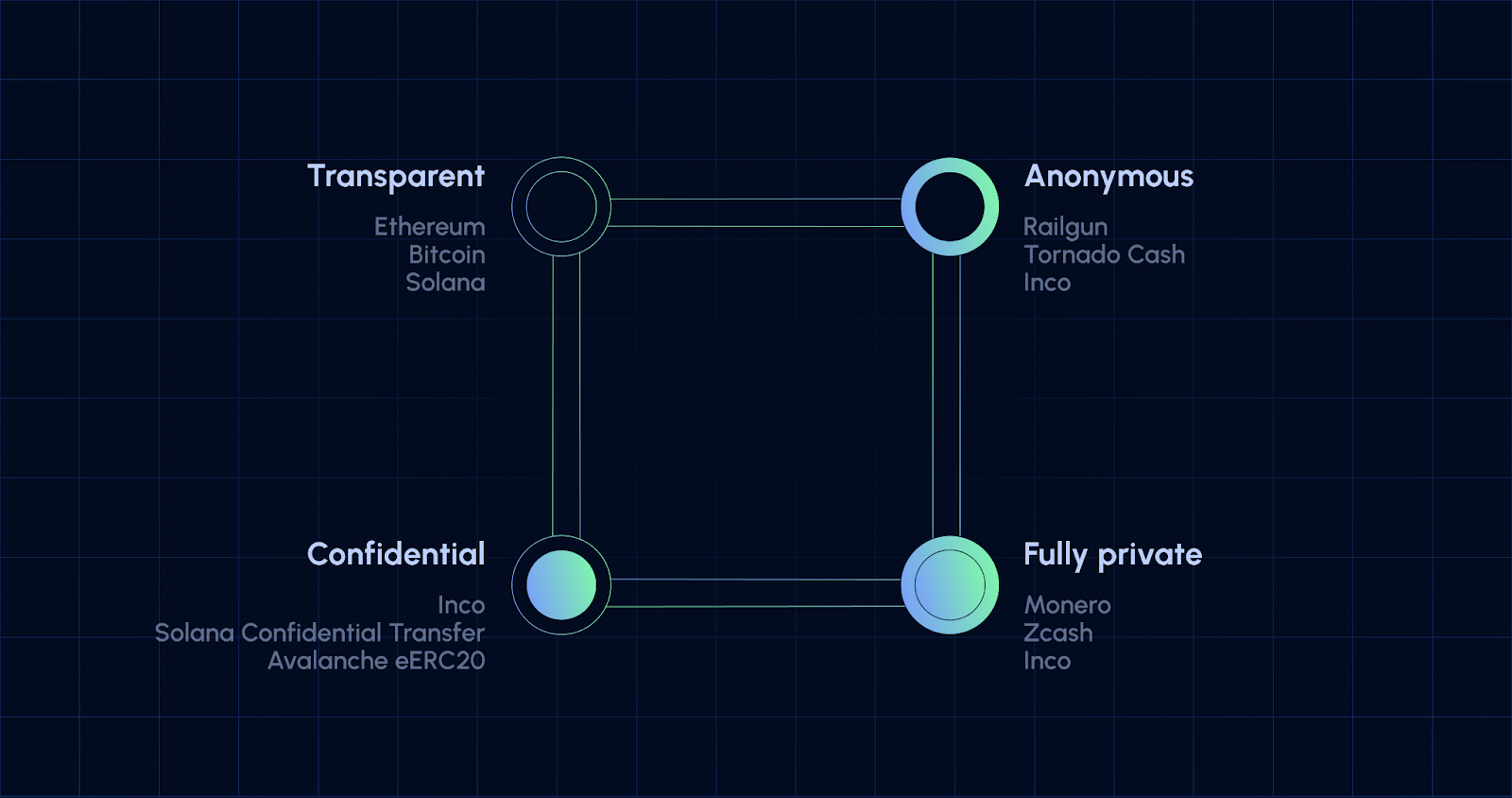The Four Levels of Blockchain Privacy

With onchain use cases such as payments gaining traction and more users seeking ways to keep their financial history to themselves, it’s important to understand that when it comes to privacy, it’s not one-size-fits-all. In fact, there are degrees of privacy, from total transparency to total privacy.
Let’s explore the different levels of privacy and talk about which might be best for specific use cases.
Interested in achieving privacy on your onchain app? Get in touch with the Inco team.

Transparency
TL;DR: Everyone can see everything.
Example use cases: Transactions, DeFi, governance, NFTs, as long as you don’t mind everyone seeing what you’re doing.

Most blockchains are transparent by design. This is great for trust, with users able to verify that there has been no double spend and everything works correctly or, even, show off their memecoin or NFT portfolio, but it’s not great if you want to do many of the same things you do in your non-crypto financial life, like get paid and buy stuff. If we switched every day-to-day payment to onchain today, it would be a social nightmare, with everyone able to see the financial lives of everyone else. Scream!
On a technical level, onchain transparency simply means that your wallet address, wallet balance, and transactions and their associated amounts are all visible. You can see this on block explorers like Etherscan.

You don’t have to go far to find examples of onchain transparency, with all major public blockchains being transparent by default, including Bitcoin, Ethereum, Solana, and many more.
Anonymity
TL;DR: Send and receive amounts are visible, but senders and recipients are hidden.
Example use cases: Political donations, healthcare bills, or anything else you don’t want anyone else to know about.

This version of onchain privacy prioritizes keeping your identity hidden, while the actual metadata (amount and asset) you transact onchain are still viewable. Addresses and balances are hidden, meaning users can be comfortable that no one knows who they are. Use cases for this might be paying a medical bill or making a political donation, or anything else you don’t want anyone else to know about.
One approach to achieving onchain anonymity is a Mixer protocol like Tornado Cash. Mixers work by users depositing a fixed amount of cryptocurrency into a smart contract pool along with many other users. The system then generates a cryptographic proof that the user made a deposit without recording which specific wallet address made it. After some time, the user can withdraw the same amount to any wallet address they choose by providing this cryptographic proof. Since many people have deposited and withdrawn funds from the same pool, it becomes extremely difficult to trace which withdrawal corresponds to which original deposit.
Additionally, some approaches to providing onchain anonymity can enable private interaction with DeFi, with users able to make swaps or take loans onchain using public DeFi protocols like Uniswap or Aave while still hiding their address.
While useful for unlinking accounts in a public blockchain context, anonymity protocols have historically had more challenging compliance and regulatory considerations to navigate.
Confidentiality
TL;DR: Your wallet address is visible, your transaction amounts and balance aren’t.
Example use cases: P2P payments, salary.

Confidentiality refers to an altogether different approach to private payments. Users can keep their balances and transaction amounts hidden, while their addresses and the fact they made a transfer is publicly recorded on the blockchain ledger.
While not the preferred method of privacy maxis, confidential onchain transactions can keep the most important information of a transaction hidden. With an encryption-based method, you could program various ways to delegate viewing access to specific parties. For example, you could get paid and transact onchain as you would in your pre-crypto life, with your balance and transfer amounts hidden, and then grant specific access to your tax software when tax return season comes.
There are many different approaches to achieving confidentiality (rather than anonymity), using technologies including ZKP, TEE, MPC, and FHE. The important thing to remember is that your identity is public, and just the amount is hidden. This makes confidentiality perfect for use cases like payroll and supply chain payments, in which you mostly want to hide the amounts being transferred while the parties are typically known. This also makes confidentiality theoretically more friendly to risk management and compliance as parties are known and potentially screenable.
Inco and Circle Research have developed a standard for confidential tokens that fits into this category. This approach features an encryption-based approach, which keeps user balances and transfer amounts hidden while their wallet addresses are public.
Total Privacy
TL;DR: No one can see anything!
Example use cases: Anything that needs to be really, really secret.

A combination of anonymity and confidentiality, total privacy does exactly what the name suggests.
Solutions like Zcash and Monero bake in privacy on a blockchain level and are the go-to choice for privacy maxis, but do not enable composability with or easy connection to the rest of the crypto ecosystem. Instead of recording visible sender addresses, recipient addresses, and amounts, these networks use advanced cryptographic techniques to encrypt or obscure addresses and amounts while still allowing the network to verify that transactions are legitimate. The blockchain can confirm that valid transfers occurred and that no one is spending money they don't have, but external observers cannot see who sent what to whom. Total privacy has the same drawbacks as anonymity with regards to potential compliance concerns, but for many use cases may be the preferred level of privacy.

We hope this breakdown was useful to you. It's important to understand that when it comes to privacy, it’s all about choosing the right level for your use case.
Inco offers a suite of different onchain privacy solutions enabled by an encryption-based approach, and can be used to achieve granular control over different levels of privacy.
Try Inco today by making a confidential transfer today on Base Sepolia testnet using Comfy.
Interested in achieving privacy on your onchain app? Get in touch with the Inco team.
Incoming newsletter
Stay up to date with the latest on FHE and onchain confidentiality.
.svg)
.png)
